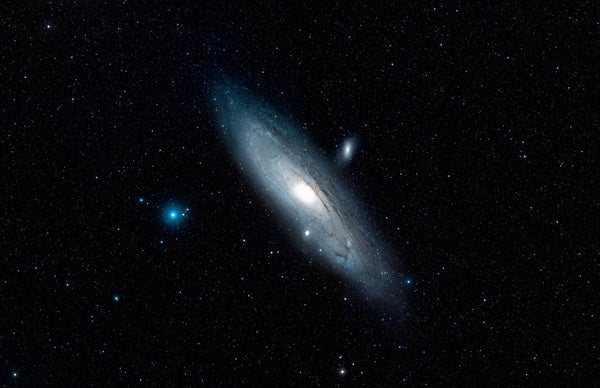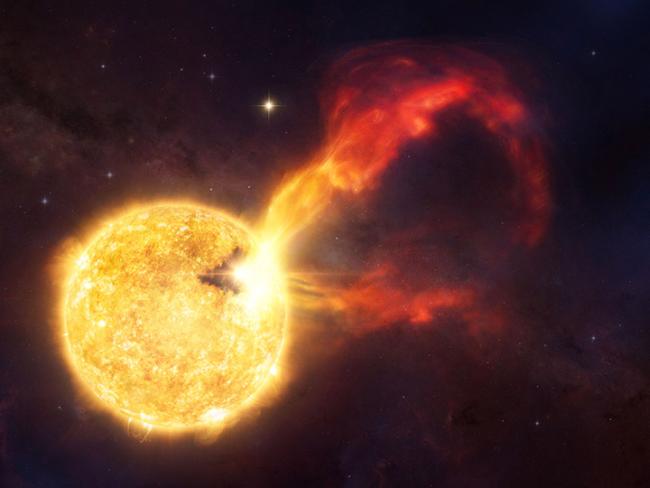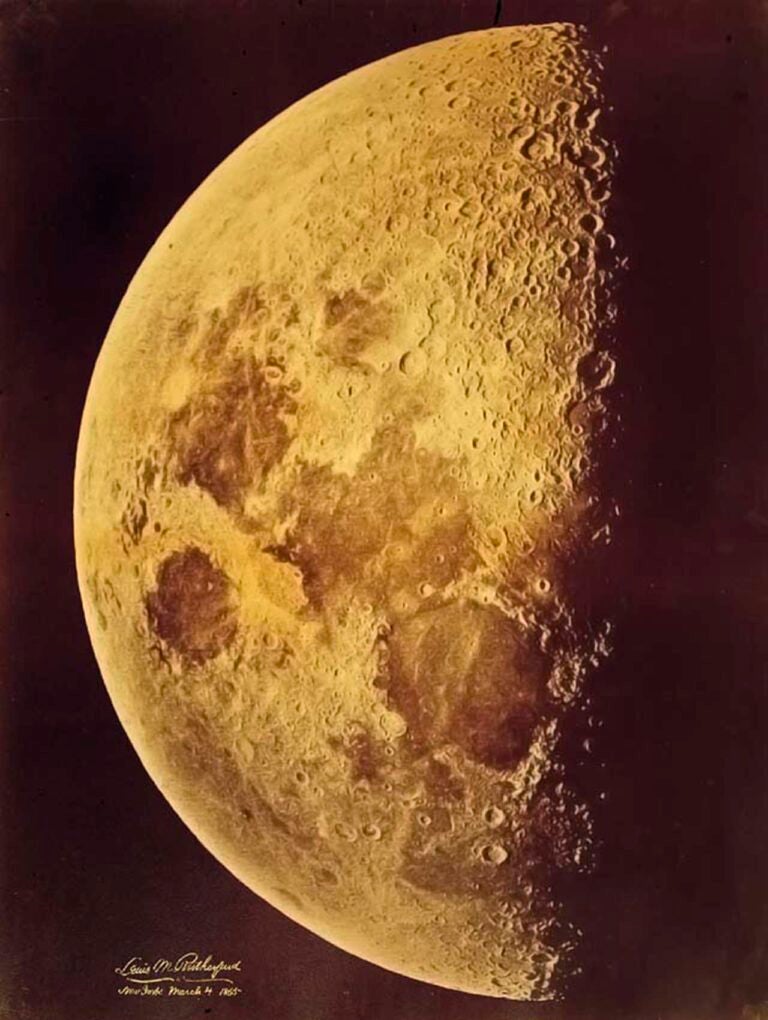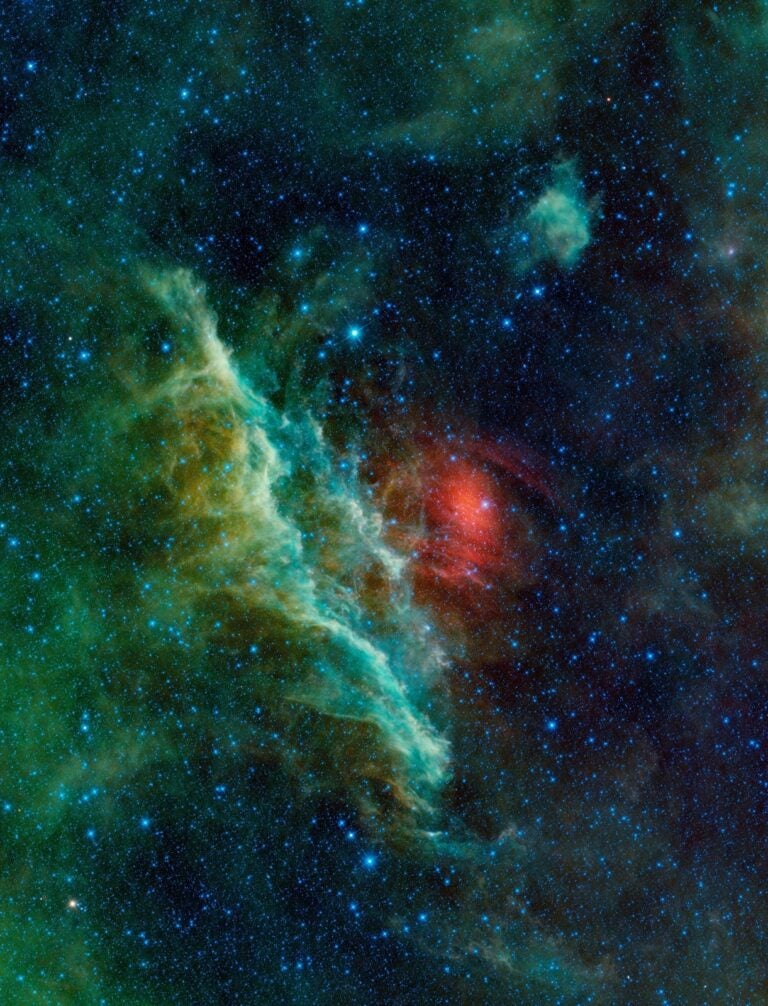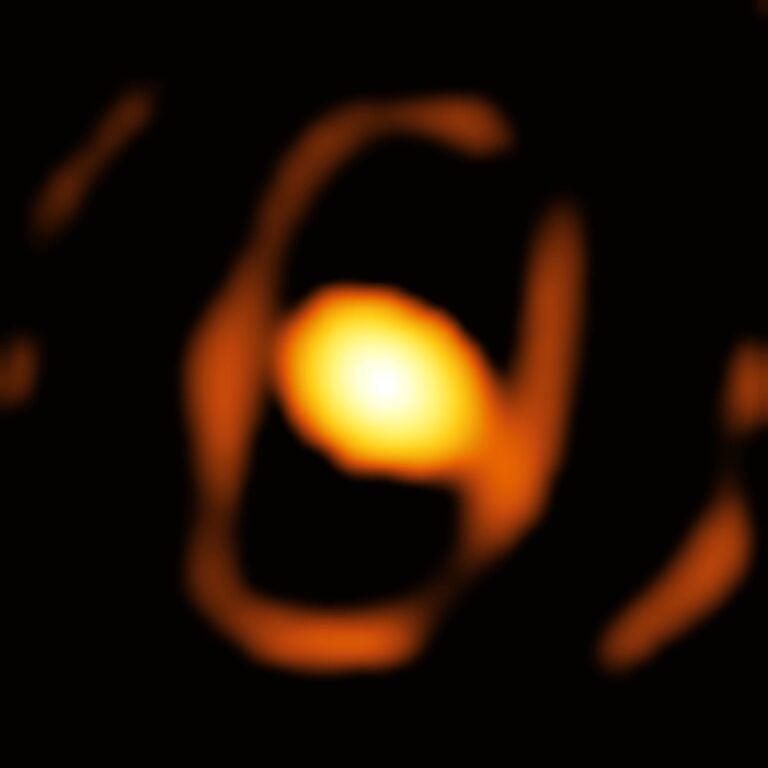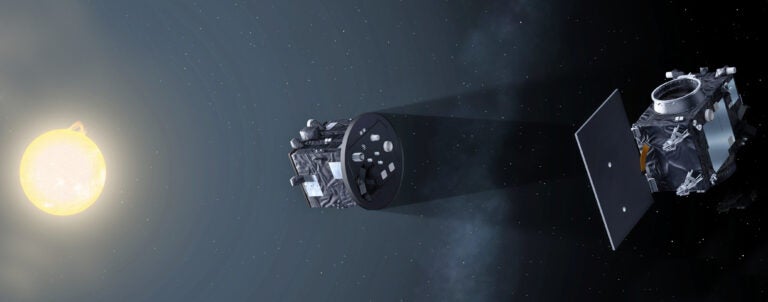In a new study accepted for publication in the Monthly Notices of the Royal Astronomical Society and funded by a grant from the National Science Foundation, authors Andrew Lipnicky and Sukanya Chakrabarti of the Rochester Institute of Technology explore whether the current orientation of satellite galaxies around the Milky Way upholds or challenges the accepted model of dark matter.
Satellite galaxies are small dwarf galaxies that have been pulled in by the gravity of a more massive galaxy, such as the Milky Way or Andromeda galaxy, and now orbit the center of the bigger galaxy. The Milky Way has several known satellite galaxies, including the famous Large and Small Magellanic Clouds, visible from the Southern Hemisphere.
Many of the Milky Way’s satellite galaxies are currently positioned in a “plane” near the galaxy’s poles, known as the vast polar structure (VPOS). Some of Andromeda’s satellites appear oriented in a similar plane around that galaxy as well. But the existence of the VPOS challenges the current standard cosmological model, as simulations based on ΛCDM physics don’t create planes such as the ones we see. Instead, the ΛCDM model predicts that there should be no preferred plane or orientation of dark matter subhalos, which are the clouds of dark matter inside which galaxies — such as the Milky Way’s satellites — reside. Instead, dark matter subhalos (and thus, satellite galaxies) should be distributed evenly around the Milky Way, not in any type of plane or other structure.
Lipnicky and Chakrabarti sought to determine whether the VPOS is a permanent or transient structure. If permanent, the VPOS would pose serious problems for the ΛCDM model as a stable structure that disagrees with dark matter simulation results. But if transient, the VPOS isn’t a problem. They used Hubble Space Telescope observations of the positions and motions of several of the Milky Way’s satellite galaxies to essentially rewind the system and determine whether the VPOS is stable over long periods of time, cosmologically speaking.
Their results confirm that the VPOS dissipates as the clock is turned back, meaning it’s only a transient, rather than a permanent structure. The plane is not very old and likely formed later in the evolution of the Milky Way and its satellites, rather than early on, as would have happened if it was associated with the dark matter halos that shape such systems. Such instability means that the current arrangement of satellite galaxies in the Local Group doesn’t conflict with the ΛCDM model.
In a press release announcing their results, Chakrabarti explained: “If the planar structure lasted for a long time, it would be a different story. The fact that it disperses so quickly indicates that the structure is not dynamically stable. There is really no inconsistency between the planar structure of dwarf galaxies and the current cosmological paradigm.”
Their finding isn’t affected by the choice of satellite galaxies, either. Said Lipnicky, “We tried many different combinations of the dwarf galaxies, including distributions of dwarfs that share similar orbits, but in the end found that the plane always dispersed very quickly.” Although the authors do note that they ignored two of the Milky Way’s satellites, Leo I and II, these satellites are extremely distant and thus most likely some of the newest satellites to enter the picture. As such, they wouldn’t have had any effect on the formation of the VPOS.
Lipnicky and Chakrabarti’s results upholding the current standard cosmology and the existence of dark matter are in agreement with a study led by Nuwanthika Fernando and published in the Monthly Notices of the Royal Astronomical Society in November 2016, which also found that the planes of satellite galaxies in the Local Group are unstable, short-lived, and compliant with the ΛCDM model.

